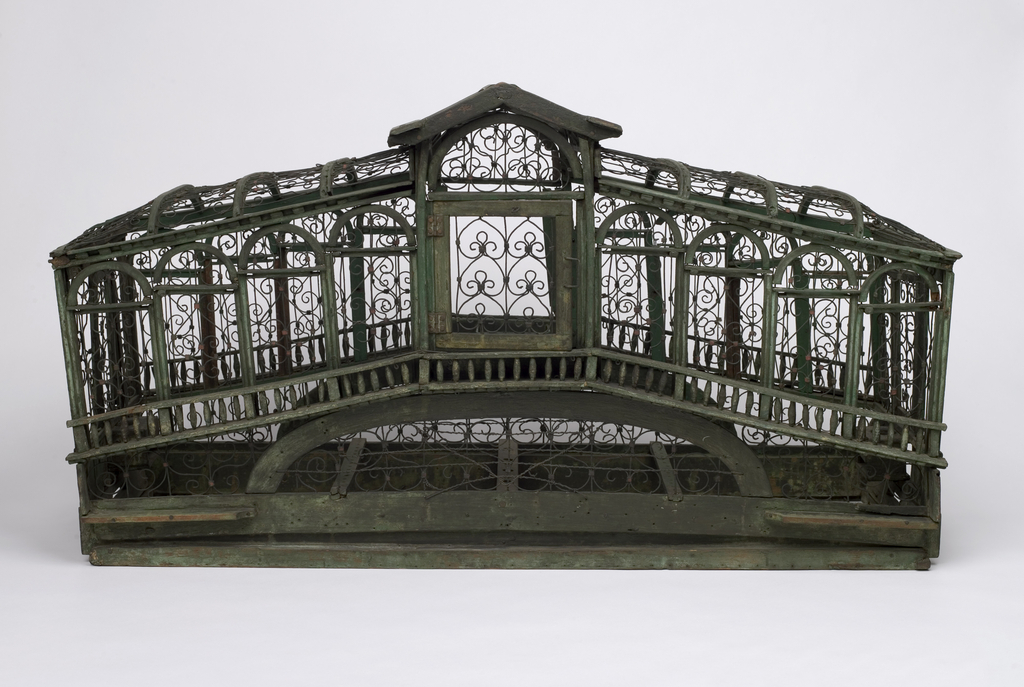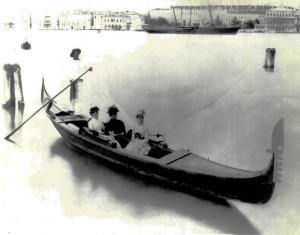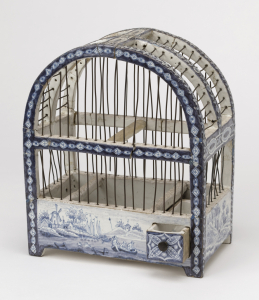Every year the fun-loving Hewitt family toured Europe, where they purchased books, prints, textiles, and objects for their budding collections. This photograph shows the Hewitt sisters, Sarah, Amy, and Eleanor, on a gondola in Venice in the 1880s. Perhaps the inspiration for this birdcage, the Rialto Bridge, is just behind them. The oldest bridge to span the Grand Canal, the Rialto was designed in the late 16th century, with prominent arches and a central portico, like those seen here.
This was not the only birdcage in their collection. In the early years of the museum, they acquired several, hoping they would be stimulating objects for aspiring designers to study such as this Delft example that features cheerful Dutch landscapes, and sporting scenes.
Birds in birdcages have long cheered up our rooms with their bright feathers and birdsong. In Renaissance Italy, for example, cages were hung in open windows like ornaments in lieu of tapestries or other textiles.[1] Exotic birds and their cages remained collectible in the nineteenth century as can be seen in the interior watercolors of the museum’s Thaw Collection. We remain as enchanted with them today, as the Hewitt sisters were in their own Gilded Age.
This birdcage will be shown in the Hewitt Sisters Collect exhibition beginning December 12, 2014.
Tanya Piacentini is a student in the History of Design and Curatorial Studies graduate program at Cooper Hewitt, and is a Master’s Fellow in the Product Design and Decorative Arts Department.
===
[1] Musacchio, Jacqueline. Art, Marriage, and Family in the Florentine Renaissance Palace. New Haven: Yale University Press, 2008.


